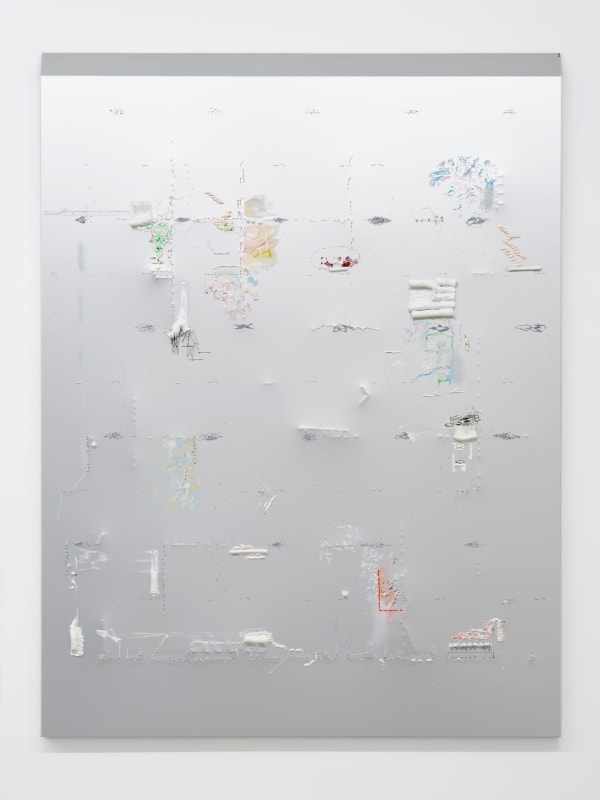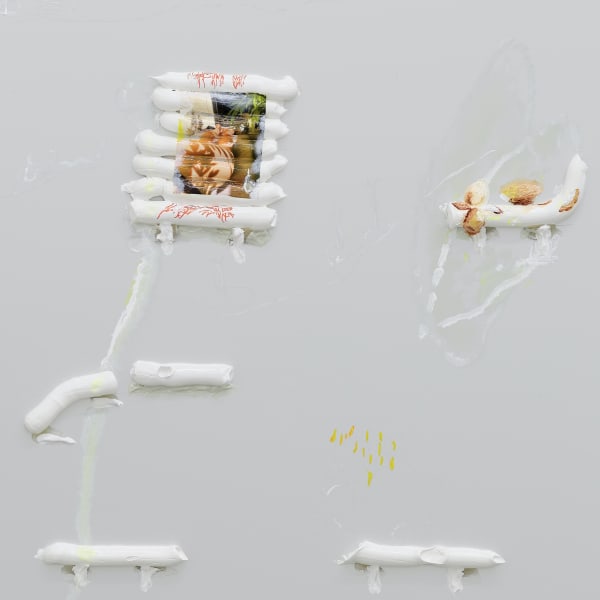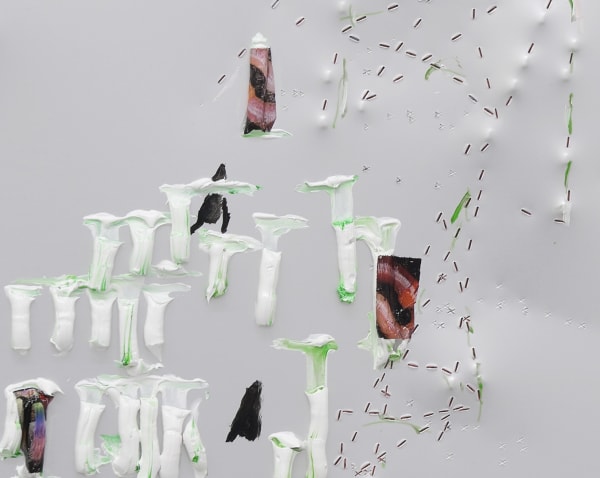ELZA SILE: kitten in a fridge
Past exhibition
Press Release
We are proud to present the first solo exhibition by Riga-born, Zurich-based artist Elza Sile, whose work constitutes one of the most original contributions to painting and installation art in recent years. The title of the exhibition; “kitten in a fridge” alludes to “Schrödinger’s cat” and the thought experiment that illustrates an apparent paradox of quantum superposition.
Working primarily on aluminium sheets and as such creating a laboratory-like appearance, Sile makes use of an unusual diversity of uncanny and ordinary materials: sliding tubes, oil paint irrigations and support systems, miniature constructions of readymade graphite pencil lead, flickering gelatine emblems, thread traps and borderlines, hand-tapped image traces, opaque inhabited capsules and topographical maps, which morph into smoke rings, voluminous spirals, warped space vortexes and snakeskin patterns.
Intricate visual scenarios elaborate into layouts of clusters, categories, menus, units and sets. The artist combines mental imagery with analytic divisions and builds up an interwoven vocabulary of psycho-spatial typologies in flux. Sile’s oeuvre consists of human-scale constructions, models made from painting materials, fictional dialogs called CASES, including translations into smaller outputs of stickers, tattoos and CG renderings.
According to Schrödinger’s thought experiment, a cat is in a box with a vial of poison. The vial breaks if an atom inside the box decays. The atom is superposed in decay and non-decay states until it is observed, and thus the cat is superposed in alive and dead states.
Upon entering the gallery, the viewer finds her/himself confronted with a setting of twenty-four paintings, arranged in u-shaped layouts, like a banquet or congress meeting. All the paintings are installed at exactly the same height, even though the gallery space is comprised of two different levels: whilst in the first room, on the lower level, the paintings are installed higher than anticipated, on the upper level, the works are installed particularly low. This choice allows for a spatial, phenomenological experience and reallocates the viewer’s body and mind.
Depending on the viewing perspective, sculptural elements emerge and disappear. Familiar objects serve as entry points to establish a relative connection in both perception and language. Miniature correlations reveal different structures of experience, which incessantly form new clusters of interpretations. Hence, the viewer is invited to investigate this mind-space of reflective task systems and to navigate into a subjective trip or training program of reflection.
Installation Views























